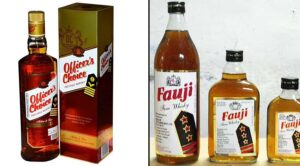Identical or Similar Trademark
If a trademark is identical or confusingly similar to a brand or trademark that has already been registered, it cannot be registered. A trademark shall not be registered if there is a likelihood of confusion on the part of the public, which includes the likelihood of association with the earlier trademark (s) and the identity or similarity of goods or services covered by such trademarks, in accordance with Section 11(1) of the Trade Marks Act 1999. This article goes into further detail on what constitutes an identical or similar trademark.

Identical Trademark
A mark is identical to a trademark if it reproduces the trademark without any changes or additions, and all parts that make up the brand or were viewed as a whole have minor differences that the average consumer would overlook. As a consequence, the criteria for identifying a mark as an identical trademark are quite straightforward.
The similarity of Trademark
A trademark that is “so nearly matching that other mark as to be liable to deceive or induce a mistake” is said to be “deceptively similar.”
Real confusion in the minds of the general public, i.e. the ordinary consumer, is not necessary for the prospect of misunderstanding to exist. As a result, the mark may be regarded similar if it is likely to deceive the ordinary consumer due to its similarity to another existing trademark or a trademark for which an application has previously been filed.
Furthermore, the following are the three most essential factors of the Trademark Office’s examination of trademark applications:
- The similarities and distinctions between the trademarks in question;
- The previous mark’s distinctiveness;
- The degree of similarity between the goods or services in question.
Comparing Two Trademarks for Similarity
According to Parker J. in the Pianotist case, the standards for determining whether two trademarks are similar have changed over time. “You must take the two terms, judge them by their appearance and sound, and consider the things to which they will be applied, as well as the kind and type of client who will likely purchase the goods,” he said. Assume that each of those trademarks is being used in accordance with all applicable terms as a trademark for the products and the respective owners of the mark. If miscommunication is possible, the application must be rejected.
Hence, some of the main Principles for the Comparison of Trademarks are
- The comparison should be conducted from the perspective of someone with average intelligence and poor memory.
- The overall structural, visual, and phonetic resemblance of the two marks, as well as the fact that there is a substantial likelihood of confusion, should be considered.
- The trademark as a whole must be examined. It is not appropriate to compare a portion of a trademark to a portion of another trademark.
- It is not necessary to compare letters one by one. The correct test is not a side-by-side comparison.
Furthermore, additional protections are necessary if the goods are pharmaceutical preparations due to the possibility of misunderstandings over markings on medical products – since the possible harm is considerably greater than in a confusion over typical consumer products.



